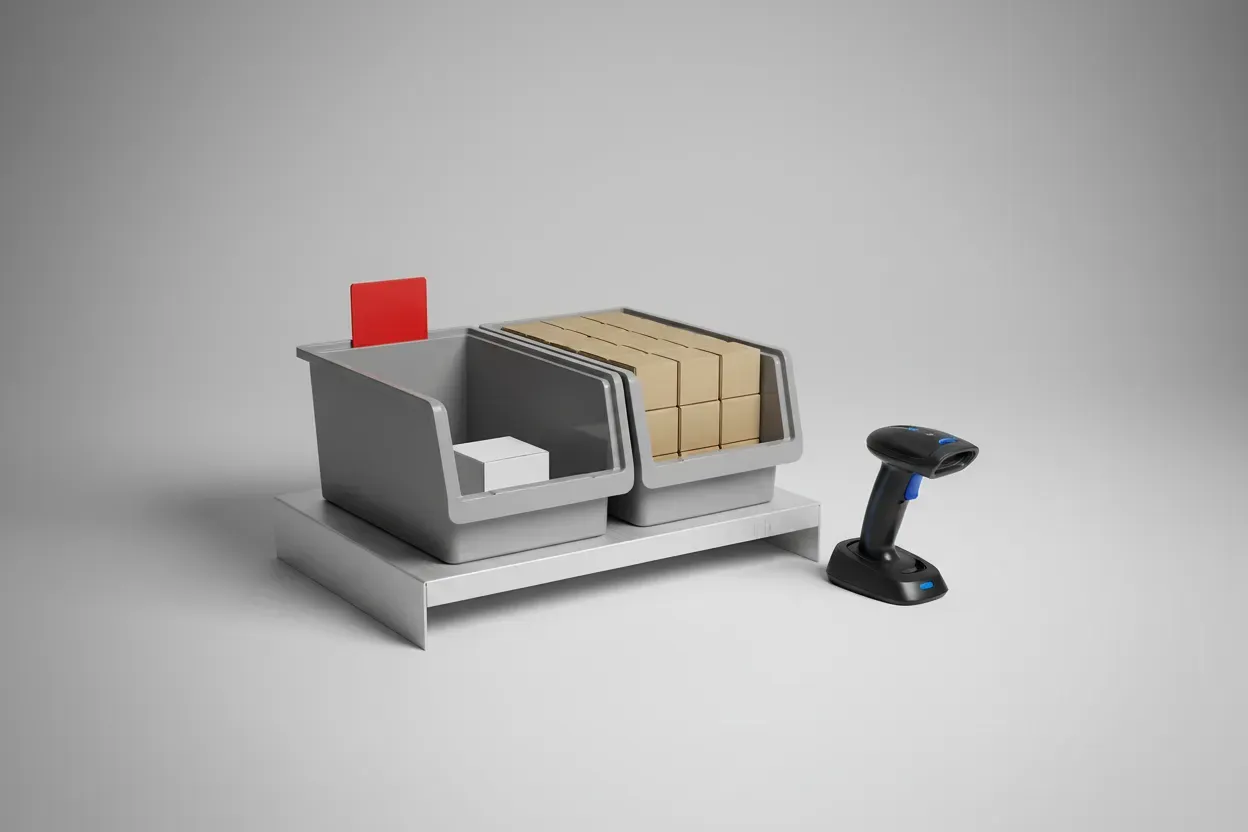9 Tips for Effective Conflict Resolution and Maintaining a Positive Team Dynamic
Conflict resolution is a crucial skill in maintaining a positive team dynamic. This article presents expert-backed strategies for effectively addressing and resolving conflicts in the workplace. From fostering open communication to collaborating on win-win solutions, these practical tips will help teams navigate challenges and strengthen their working relationships.
- Collaborate on Win-Win Solutions
- Foster Open Communication and Active Listening
- Walk the Installation for Collaborative Solutions
- Focus on Interests, Not Positions
- Facilitate Mediation for Transparent Resolution
- Reverse Perspectives to Enhance Understanding
- Use Fact-Based Approach in Tree Care
- Conduct Private Check-Ins Before Group Meetings
- Reset Focus on Shared Goals
Collaborate on Win-Win Solutions
Conflict is natural in teams. Handled correctly, it can spur growth instead of causing harm. My go-to approach is a win-win mindset where everyone collaborates on a mutually beneficial solution.
For example, two colleagues once clashed over a project deadline. Both cared about success, but egos got in the way. One colleague insisted the deadline was non-negotiable, bulldozing ahead without listening. The other avoided direct discussion, hoping the issue would disappear. They even considered splitting the difference on the deadline as a compromise, but none of these moves solved the problem. Tension grew.
To break the stalemate, I brought them to a neutral space with a whiteboard. We mapped the project timeline and tasks. This separated the problem from the people and built a shared understanding. Next, each colleague spoke while the other listened intently. I ensured each person felt heard and understood. They realized both wanted a successful project; they just approached it differently. Finally, we brainstormed solutions together on the board. We combined their ideas into a plan adjusting the timeline and reallocating resources. The solution met the deadline and maintained quality.
The result was more than a met deadline; their win-win solution strengthened their working relationship. They also learned to communicate openly instead of clashing. Now they no longer dread disagreements, seeing conflict as a chance for creative discussion. In my experience, a win-win mindset is the most effective conflict resolution technique. It turns ego battles into joint problem-solving sessions. I encourage every leader to see conflict as an opportunity to innovate and grow. With the right approach, even tough disagreements can strengthen teams and improve results.
 Saranne Segal
Saranne Segal
Managing Partner & Workplace Mediator, Segal Conflict Solutions
Foster Open Communication and Active Listening
I manage conflicts by encouraging open, respectful communication and active listening. One effective technique I use is hosting a neutral, one-on-one or small-group conversation where each person shares their perspective without interruption. This approach fosters understanding, reduces tension, and often reveals common ground, allowing the team to move forward collaboratively and maintain a positive, productive dynamic.
 Chris Hunter
Chris Hunter
Director of Customer Relations, ServiceTitan
Walk the Installation for Collaborative Solutions
Our most effective conflict resolution technique is what we call “walking the installation.” When disagreements arise–particularly between sales and installation teams–we reconvene at the job site or with the actual materials in question rather than debating abstractly in the office. Recently, when our sales team and installers disagreed about whether a particular hardwood could be installed over an existing subfloor, walking the site together revealed specific challenges neither group had fully considered. This physical context shifts conversations from defensive positioning to collaborative problem-solving and creates mutual respect as each team witnesses the others’ expertise in action.
 Dan Grigin
Dan Grigin
Founder & General Manager, Elephant Floors
Focus on Interests, Not Positions
We thrive on collaboration and innovation to empower nonprofits, SMBs, and government agencies. Disagreements naturally arise, like in any dynamic workplace built on diverse expertise and passionate individuals. We view these moments not as roadblocks, but as opportunities for growth and deeper understanding, provided they are managed constructively. Maintaining a positive and productive team dynamic is crucial, as it directly impacts our ability to deliver the exceptional, tailored IT solutions our clients depend on. Our focus on clarity extends to our internal processes, including how we handle conflict.
Over our years of experience in IT, people management, and business administration, we’ve learned that unresolved conflict can stifle creativity and efficiency. One of our most effective techniques stems from focusing on underlying interests rather than entrenched positions. When a disagreement surfaces, individuals often state a position – what they want. For example, two team members might disagree on the best technical approach for a client’s system migration. One might insist on Method A, the other on Method B. Simply arguing the merits of A versus B leads to a stalemate or a grudging compromise where no one is delighted.
Instead, we guide the conversation towards uncovering the interests behind each position – the fundamental needs, concerns, hopes, or fears driving their stance. We encourage active listening and ask probing questions like, “What is it about Method A that you feel best serves the client’s long-term goals?” or “What concerns do you have about the potential risks of Method B?”. This shift encourages team members to articulate the ‘why’ behind their preferences. Often, we find shared underlying interests, such as ensuring data integrity, meeting the client’s budget constraints, minimizing downtime, or ensuring future scalability. Once these common interests are identified, the focus shifts from a win-lose battle over positions to a collaborative problem-solving session. Together, the team can brainstorm solutions that address the core interests of everyone involved, sometimes leading to a hybrid approach or an entirely new, innovative solution (Method C) that surpasses the original options. This technique fosters empathy, validates concerns, builds trust, and ultimately leads to more robust and sustainable resolutions, preserving the positive, collaborative environment essential to our and our clients’ success.
 Steve Fleurant
Steve Fleurant
CEO, Clair Services
Facilitate Mediation for Transparent Resolution
I manage conflict by preventing it from getting to a point of no return and fostering transparent, respectful communication. One method I use that is effective is facilitated mediation—bringing the two contradictory parties together to hear one another while I facilitate the direction of the conversation for resolution. It exposes the root issues while simultaneously getting people to meet in the middle. As long as I create a safe space for conversation, trust isn’t compromised, and team cohesiveness remains cooperative, even in the face of conflict.
 Amy Mayer
Amy Mayer
Product Engineer, Shawood
Reverse Perspectives to Enhance Understanding
Reversing perspectives is one of the most effective and surprisingly transformative techniques I’ve used to resolve workplace conflict.
The concept is simple, but powerful: each person involved in the disagreement is asked to take on the perspective of the other. They must explain their colleague’s position, motivations, and concerns–not as an observer, but as if they truly believe and advocate for them.
This exercise does more than just clarify misunderstandings. It lowers defensiveness, fosters empathy, and forces a deeper level of listening. By stepping into someone else’s shoes, even momentarily, people often realize that the disagreement isn’t as personal or combative as it may have felt.
And yes, sometimes it even adds a bit of levity to the situation–which can be exactly what’s needed to diffuse tension.
More importantly, it sends a clear message: we’re not here to win arguments, we’re here to solve problems together. In my experience, this method not only resolves the conflict at hand but also strengthens the team’s culture of mutual respect and collaboration.
 Michael Moran
Michael Moran
Owner and President, Green Lion Search
Use Fact-Based Approach in Tree Care
Effective conflict management in commercial tree care revolves around clear communication, safety-first decision-making, and structured resolution strategies. One of the most effective techniques I use is the “fact-based resolution approach,” which ensures that disagreements are addressed with objective data rather than emotions or assumptions.
For example, if a disagreement arises between team members over whether a tree should be removed or preserved, I rely on tree risk assessment tools such as resistograph readings, decay mapping, and structural analysis. By presenting measurable data–such as decay depth, load-bearing capacity, or pest infestation levels–we can make decisions based on industry standards (ANSI A300, TRAQ guidelines) rather than personal opinions.
This approach not only resolves conflicts efficiently but also reinforces team cohesion by shifting focus to professional best practices rather than interpersonal differences. Additionally, I prioritize open debriefings after high-stress jobs, such as emergency removals or storm response, to ensure all team members feel heard, valued, and aligned with our shared mission of safety, sustainability, and regulatory compliance.
By fostering a culture of evidence-based decision-making and open dialogue, conflicts are minimized, productivity is maintained, and the team remains focused on delivering high-quality arboricultural services.
 Mario Galo
Mario Galo
CEO, G&V Tree Service
Conduct Private Check-Ins Before Group Meetings
One technique that has worked well for us is private, one-on-one check-ins before group resolution. This allows people to feel heard without pressure and creates space for honest communication.
A few years ago, two of our team leads—one from design and one from production—had a disagreement over a delayed project. Instead of calling a meeting right away, I spoke with each of them separately. In private, they opened up about their frustrations but also their shared goals. That’s when I realized they weren’t fighting about the task; they were trying to protect their teams. Once they felt understood, we met as a group. I didn’t push for immediate solutions. I simply said, “You’re both right in different ways. Now, what can we do together to move forward?” That softened the tone instantly, and they collaborated on a new timeline and even decided to run future planning meetings together.
Since then, I’ve used this approach consistently. When tension rises, pause and go one-on-one first. In those quiet conversations, you often find the real issue: ego, pressure, or misunderstanding. Once you clear that, the group talk becomes productive, not performative.
I also believe it helps when leaders model calm behavior. If I react emotionally, it only adds fuel. So I focus on listening, staying neutral, and reminding the team that we’re here to solve problems, not prove who’s right.
 George Yang
George Yang
Founder and Chief Product Designer, YR Fitness
Reset Focus on Shared Goals
One technique I rely on when managing team conflicts is the “shared goals reset.” When a disagreement starts to get tense—whether it’s about priorities, communication styles, or ownership—I bring the team back to the why behind the work. I’ll ask, “What are we actually trying to achieve here, and where do we all agree?” That question immediately shifts the focus from personal positions to shared outcomes.
One time, two team leads clashed over how to execute a product launch—one wanted speed, the other wanted polish. I got them in a room and reframed the conversation around our core OKR: adoption within 30 days. Suddenly, it wasn’t about who was “right,” but how we could best serve the goal. They ended up co-creating a phased launch plan that honored both perspectives. The tension eased because we weren’t forcing agreement—we were finding alignment. It’s simple, but powerful: people are more willing to compromise when they remember they’re on the same side.
 Julian Knox
Julian Knox
Marketing & PR Coordinator, Blankoon Cocktails & Events







































